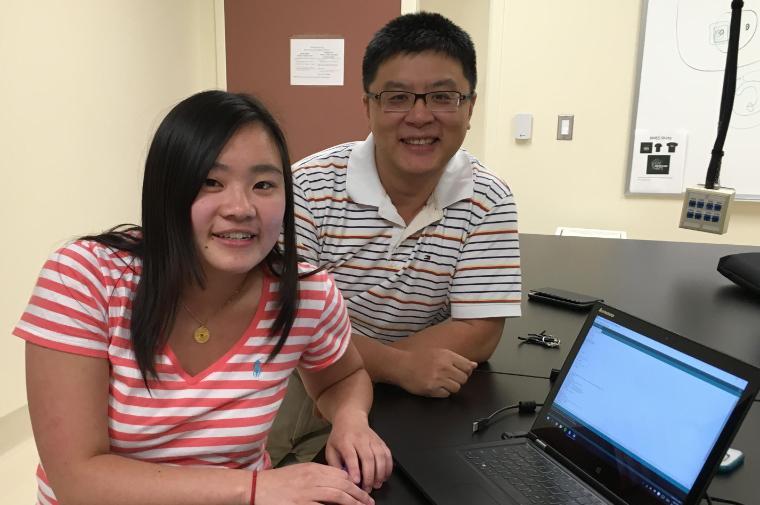
A Bloodless Coup
For millions of diabetics the oft-repeated task of pricking a finger to check glucose level is a messy, painful fact of daily life. And it's one that bioengineering professor Zhiwen (Jonathan) Zhang hopes to change for the better. Last spring, he presented undergraduate juniors and seniors taking his Biodevice Engineering course with a problem to solve in their lab: Create a noninvasive portable glucose monitor for less than $100 that performs comparably to a standard glucose blood test. He pointed the students to recent progress on the topic and some reference materials, brought in colleagues from bioengineering (Emre Araci) and computer engineering (Navid Shaghaghi) to give tailored lectures on programming and control boards, and arranged for lab manager Adrian Valones and graduate student TAs Eddy Liu, Steve Long, and John Tidwell to help out throughout the quarter. Then students had to independently figure out how to engineer their own devices. "I gave them the vision and a problem and taught them sufficient scientific and engineering principles to get started, but we weren't there to hold their hands," said Zhang. "Students were required to translate what they had learned from classes into a product that is needed by a community or market. They had the freedom to play and reach the goal."
And did they? At the appointed time for their final exam, students watched as Dr. Zhang tested his blood sugar concentration using a traditional blood-drawing device and wrote his result on the white board. Within minutes, 11 teams of 23 students brought their final products forward to be tested against the standard method. One after another, each team presented a noninvasive device for measuring blood glucose. Zhang reports, "The devices came with all kinds of 'flavors.' Some of them were cute and colorful small boxes that were 3D-printed; some of them were merely shoeboxes." For the test, Dr. Zhang inserted one finger into a box and within five seconds the glucose concentration in his blood was read on their displays. "Of course," said Zhang, "each device, depending on its engineering, had different measuring speed and accuracy. The best two groups had the most accurate reading, with 99.2% accuracy."
Casey Kiyohara and her lab partner Ciara Gonzales created one of those most successful devices—an enclosed box housing a finger rest, 1,300-nanometer light and receptor, and a circuit board transmitting data to a nearby laptop. Software on the computer performed the calculation and displayed the result. "We played around with taking the reading from the earlobe, or with using a different wavelength and found out a longer wavelength infrared light would perform better because it absorbs less water and more glucose—but we had to sacrifice some accuracy to keep the cost down," said Kiyohara. "If we were to develop this further, we would want to get rid of the computer and have the device all in one clip."
Zhang agrees the $100 limit created a challenge. "Students had to be creative. They made some of their own parts in the School of Engineering's Maker Lab using the 3D printers. This pushed them to exercise their maximum capacity. There was nothing defined between presenting the project and the final test. In between they had the TAs and their teammates, but they had to figure out a lot of things themselves. This is a teaching model we find very successful at Santa Clara—putting a problem in our students' hands.
"There is so much potential for this platform. I would love to see students take it home and become entrepreneurs, expanding on the work they started here," he said. (Kiyohara notes that she actually did take theirs home and tested it on her dad while he was sleeping.)
Moving forward, Zhang would like to see other courses build on the technology—making it smaller, wearable, and maybe wireless to link up with an insulin pump to provide 24/7 patient monitoring and treatment. For now, SCU has filed the paperwork to begin patenting the research. "This is a highly competitive field [with] several competing technologies being tested currently," said Zhang. "Everyone wants to do noninvasive, but there is no commercial product out yet. It's so exciting to have our students be a part of advancing this research."
Casey Kiyohara '17 and Jonathan Zhang demonstrate the top performing noninvasive glucose monitors in the Bioengineering Device Lab. Credit: Heidi Williams